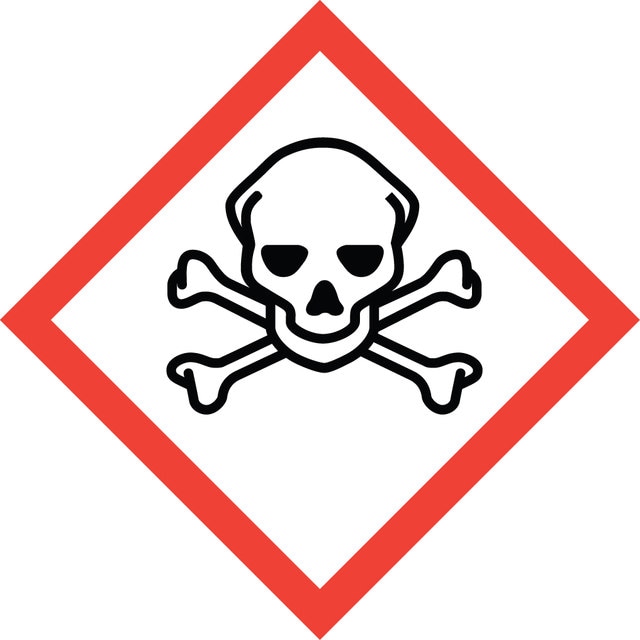Sign In to View Organizational & Contract Pricing
Select a Size
About This Item
Linear Formula:
Rh(CO)2(C5H7O2)
CAS Number:
Molecular Weight:
258.03
EC Number:
MDL number:
UNSPSC Code:
12352103
PubChem Substance ID:
NACRES:
NA.23
Quality Level
Assay
98%
form
solid
reaction suitability
reagent type: catalyst
mp
154-156 °C (lit.)
SMILES string
[C-]#[O+].[C-]#[O+].CC(=O)\C=C(\C)O[Rh]
InChI
1S/C5H8O2.2CO.Rh/c1-4(6)3-5(2)7;2*1-2;/h3,6H,1-2H3;;;/q;;;+1/p-1/b4-3-;;;
InChI key
BZCAWKOPWNIDOC-FGSKAQBVSA-M
Looking for similar products? Visit Product Comparison Guide
General description
Rh(CO)₂(acac) appears as a yellow to orange crystalline solid. It is soluble in various organic solvents such as benzene, toluene, and acetone, which makes it convenient for both solution-based synthesis and vapor-phase processing techniques. It is commonly used as a precursor for the deposition of rhodium-containing thin films and nanomaterials. Its ability to decompose cleanly under controlled conditions makes it suitable for processes like chemical vapor deposition (CVD) and atomic layer deposition (ALD), enabling the fabrication of conductive coatings, catalytic layers, and electronic materials. Additionally, it serves as a molecular precursor for synthesizing rhodium nanoparticles, which are employed in applications such as fuel cell catalysts, hydrogen evolution reactions, and nanoelectronics.
Application
Employed in in situ formation of a fluorous-soluble hydroformylation catalyst of interest in molecular engineering.
Rh(CO)₂(acac) can be used:
- As a precursor for the synthesis of rhodium nanosheets which are used in catalysis which are utilized as a support for bimetallic PtRh nanoparticles, significantly enhancing their catalytic activity in oxidation reactions.
- As a catalyst for the selective hydrogenation of dioctyl phthalate (DOP) to produce the environmentally friendly plasticizer di(2-ethylhexyl)hexahydrophthalate (DEHHP).
- As a precursor for the synthesis of single-atom rhodium catalysts which are used in electrocatalytic reactions, such as the hydrogen evolution reaction (HER).
- As a molecular precursor for synthesis of rhodium nanoclusters on oxide surfaces, such as Al₂O₃/Ni₃Al(111) via physical vapor deposition (PVD) (5)
Features and Benefits
- 98% purity minimizes impurities, enhancing catalytic activity in hydrogenation and carbonylation reactions for higher reaction rates and improved selectivity.
- The absence of impurities in the product enhances electrochemical properties, resulting in more efficient and reliable performance in electrochemical cells and sensors.
Signal Word
Danger
Hazard Statements
Precautionary Statements
Hazard Classifications
Acute Tox. 3 Oral - Aquatic Chronic 2 - Eye Irrit. 2 - Flam. Sol. 1 - Skin Sens. 1
Supplementary Hazards
Storage Class Code
4.1B - Flammable solid hazardous materials
WGK
WGK 3
Flash Point(F)
Not applicable
Flash Point(C)
Not applicable
Personal Protective Equipment
dust mask type N95 (US), Eyeshields, Gloves
Choose from one of the most recent versions:
Already Own This Product?
Find documentation for the products that you have recently purchased in the Document Library.
Horvath, I.T. et al.
Journal of the American Chemical Society, 120, 3133-3133 (1998)
K A Merchant et al.
Physical review letters, 86(17), 3899-3902 (2001-05-01)
2D spectrally resolved ultrafast (<200 fs) IR vibrational echo experiments were performed on Rh(CO)(2)acac [(acetylacetonato)dicarbonylrhodium (I)]. The 2D spectra display features that reflect the 0-1 and 1-2 transitions and the combination band transition of the symmetric (S) and antisymmetric (A)
Andrei V Pakoulev et al.
The journal of physical chemistry. A, 112(28), 6320-6329 (2008-06-25)
Triply vibrationally enhanced four-wave mixing spectroscopy is employed to observe vibrational coherence transfer between the asymmetric and symmetric CO-stretching modes of rhodium(I) dicarbonyl acetylacetonate (RDC). Coherence transfer is a nonradiative transition of a coherent superposition of quantum states to a
Our team of scientists has experience in all areas of research including Life Science, Material Science, Chemical Synthesis, Chromatography, Analytical and many others.
Contact Technical Service

